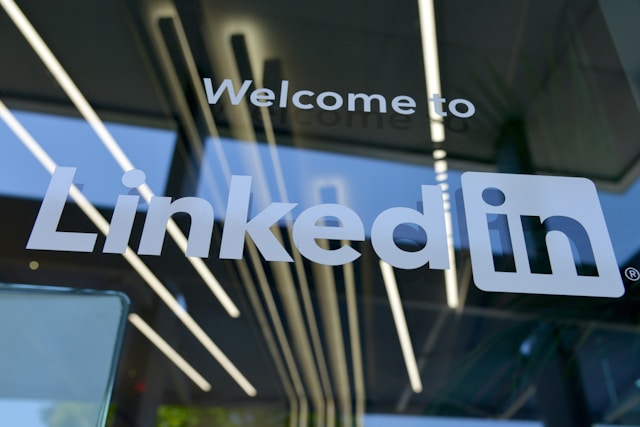If you’ve been searching for a PPC automation solution, you might already know about Adzooma, one of the most promoted PPC automation platforms. However, there are a lot of Adzooma’s alternatives, including PromoNavi.
Why is this post worth your time?
Well, if you haven’t decided yet what PPC automation platform to choose, or you are searching for an Adzooma alternative, you will find here all the major aspects that help you make the grounded decision. In the end of the article, there is a comprehensive comparison table of these two platforms.
PromoNavi vs. Adzooma Overview
Before we start the comparison, let’s take a look at what PromoNavi and Adzooma platforms are, and what they serve.
What is PromoNavi?
PromoNavi is a digital platform for PPC marketing automation. PromoNavi provides a comprehensive toolkit for PPC advertisers, no matter if they are in-house marketers or small business owners who run ads by themselves.
PromoNavi started in 2013 as a toolkit for the internal needs of the Russian digital agency. 2015 was a breakthrough year for the platform as it has joined Google Premier Partner Program. In 2017, PromoNavi became a standalone platform—everyone could sign up and try it out. One year later, PromoNavi was launched in Poland.
In 2019, PromoNavi went worldwide—promonavigator.com became available throughout the globe. Today, PromoNavi is a platform that serves more than 8000 clients from 54 countries, including the US, UK, Australia, Spain, Hungary, Netherlands, Germany, Canada, India, and others.
The list of PromoNavi’s features and tools:
- Analytics Dashboard
- Competitor Analysis
- Keyword Planner & Campaign Builder
- Keyword Wrapper
- Keyword Lists
- Campaigns Optimization
- Account Alerts
- PPC Reporting
- Google Ads Automation App for Shopify
(We’ll cover each tool below.)
Supported ad platforms:
- Google Ads
- Microsoft Advertising
- Facebook Ads
What is Adzooma?
In its ideology, Adzooma is somewhat similar to PromoNavi. It stands for PPC advertising automation for SMBs, saving time spent on routine actions, and increasing KPIs.
Adzooma was founded in 2015 as a reporting tool for advertisers on Google. In 2019, Facebook and Microsoft were added to Adzooma. One year later, the Marketplace was launched. This is a platform where marketers can hire agencies and freelancers. One of the last significant updates is adding an SEO report to Adzooma.
The list of Adzooma’s features and tools:
- Dashboard
- Account Management, incl. Campaign Builder
- Automated rules
- Optimization Opportunities
- PPC and SEO Reports
Supported ad platforms are the same as PromoNavi’s:
- Google Ads
- Microsoft Advertising
- Facebook Ads
PromoNavi vs. Adzooma: Similar Features
As PromoNavi and Adzooma both are PPC automation platforms, they have some similar tools and features. However, similar doesn’t mean the same. Let’s find out what similar features each platform suggests and what the differences are.
Real-time account performance overview
This feature is inherent for all the PPC automation platforms. After you link an ad account to the platform, you see a dashboard with key metrics and trends.
Adzooma
Adzooma’s dashboard has two views: general performance overview and account performance overview.
From the General performance overview page, you can see your overall Business Score, Business Score breakdown, and key metrics across linked ad accounts.
Business Score is calculated by Adzooma. It shows how successful your marketing is across your online business. Business Score is based on your SEO, PPC, and Web metrics.

Business Score breakdown
From the table below, you can see the performance breakdown across linked accounts.

Performance breakdown across linked accounts
When you click an account name, you’re directed to the account performance view. From here, you see your PPC Score details, a dashboard with optimization suggestions (Opportunities), and account performance metrics.

The account performance chart
PromoNavi
PromoNavi’s Dashboard has two views as well: the All accounts view and Account view.
The All accounts view showcases the overall performance across linked accounts. Unlike Adzooma, you can display several metrics on the chart at once. This gives you an opportunity to see how the specific metric changes affect your KPIs.

PromoNavi’s Dashboard
The All account view allows you to see the most significant changes within accounts and campaigns during the given time range.

The biggest campaign changes
Below this section, there are optimization recommendations for linked accounts.

Optimization recommendations on the Dashboard
After you switch to the Account view, you get detailed account analytics. Unlike Adzooma, where the account view is a summary of the key metrics, PromoNavi’s Dashboard provides you with comprehensive data. For example, you can see how your account performs across segments, analyze data across conversion goals, and dive into campaigns performance.

PromoNavi’s Dashboard (Account view)
Some of the most significant metrics are visualized on the charts.

Charts with key metrics
Below the charts, you can see the optimization recommendations for the account.

Optimization recommendations (Account view)
Summary
Adzooma’s dashboard looks like a basic account summary rather than an analytics solution. You get an overview of metrics and KPIs at the account level, but you can’t go down to the campaigns, segments, and goals. However, Business Score may be interesting for those who want to estimate their marketing efforts.
PromoNavi’s Dashboard is more about analytics than Adzooma’s one. From the Dashboard, you can discover abnormal trends, find underperforming segments, see what factors impede the reach of the specific goals, create alerts for each metric in one click, etc.
Campaign builder
PromoNavi
PromoNavi’s Campaign Builder tool allows you to automatically create campaigns and download them to your Google and Microsoft accounts.
Campaign Builder is integrated into the Keyword Planner and Competitor Analysis tools, so you can quickly create campaigns based on keywords you’ve collected. You just tick keywords, and the system will group them, add cross-group negative keywords, apply match types, and send ad groups to existing or new campaigns.

PromoNavi’s Campaign Builder
Adzooma
Adzooma’s Campaign Builder is a simplified version of the one from Google. It works only for Google Ads—with its help, you can’t create campaigns for Microsoft Advertising.
To create a campaign, you should enter basic settings (budget, location, etc.), keywords, and ad assets. Unlike PromoNavi, Adzooma doesn’t have keyword research tools, so you need to collect keywords and negative keywords using third-party tools or upload keyword lists.

Adzooma’s Campaign Builder
Summary
The ideology of PromoNavi’s Campaign Builder is to help users quickly organize keywords into groups and find cross-group negative keywords. Campaign Builder is integrated into keyword research tools so you can quickly create a campaign based on collected keywords.
Adzooma’s Campaign Builder includes basic campaign settings, but it lacks automation features—after creating a campaign, you still need to go to your ad account to define specific settings.
Optimization recommendations
Both platforms provide recommendations, but they work differently.
Adzooma
In Adzooma, recommendations are called Opportunities. The system revises linked accounts so they match the pre-defined checklist points. If a mismatch is detected, the system suggests fixing the issue.

Adzooma’s Opportunity section
For example, if you haven’t set an ad schedule, your opportunity will be to schedule your ads. However, the system doesn’t suggest the optimal schedule—it’s up to you to decide when to show your ads. After you enable ad scheduling, it is queued—meaning that it will not be applied immediately. The same procedure concerns other opportunities.

Queued ad scheduling in Adzooma
PromoNavi
In PromoNavi, recommendations are available within the Campaigns Optimization tool. They have two main differences from Adzooma’s Opportunities:
1. They are data-based, not checklist-based. The system aggregates stats from Google Ads and Google Analytics and suggests data-driven improvements, including new effective keywords, negative keywords, ineffective keywords, bid adjustments, etc.

Cards with all the available PromoNavi recommendations
2. You can apply all the recommended changes to your campaigns from the PromoNavi interface immediately—you don’t need to wait your turn in a queue.
For instance, here is how PromoNavi showcases ineffective keywords:

Ineffective keywords recommendations
For each keyword, you can see comprehensive stats to decide whether or not you need to stop it. To stop keywords, just tick them and press the “Stop these keywords” button. Other recommendations work similarly.
Summary
Adzooma provides more recommendations than PromoNavi. However, many of them look more likely to be PPC best practices checklist points rather than data-driven recommendations. Besides, some of them are controversial. For instance, enabling ad scheduling is not always effective, nor is disabling Search Partners.
PromoNavi suggests 8 in-depth recommendations related to keywords, negative keywords, ad copies, bid adjustments, and broken links. You can apply them as they are or delve into analytics and decide whether you need to disable some of the recommendations or make changes to them. Changes are applied to your accounts immediately—you don’t need to wait in a queue.
Reports
The reporting feature is significant for PPC managers and business owners. That is why PPC platforms roll out reporting tools. Like other tools we’ve covered, PromoNavi’s and Adzooma’s reports have many differences. Let’s take a closer look at them.
PromoNavi
In PromoNavi, you can set up two types of reports:
- 16-page report for Google Data Studio. This is the most comprehensive GDS reporting template on the market. Within a single report, you can see all the essential performance data, from KPIs overview to Funnel report. You can segment the data by demographics, location, devices, and choose the date range. If you need to share the report, you can do it using the sharing link.

The fragment of PromoNavi’s GDS report
- Scheduled PDF reports. With this tool, you don’t need to create reports for your clients or managers—you just enter recipients’ emails, and they’ll receive their PDF report copies weekly or monthly, depending on the schedule. These reports are available for Google and Microsoft accounts. These reports are white-labeling—meaning that you can place your logo on the report copies and present them as tailored by your agency. PDF reports support 5 languages: English, Russian, Italian, Spanish, and Hungarian.

The fragment of PromoNavi’s Scheduled PDF report
Adzooma
Adzooma has 6 pre-built report templates and a custom report. The latter allows you to build and save your own report template. All the reports are available online or you can download them as PDFs. There is no scheduling feature, so you can’t send reports weekly or monthly to your clients. Also, there is no GDS report template, as in PromoNavi.

Adzooma’s reports
Summary
PromoNavi’s reports cover all the aspects of your PPC marketing, from general KPI to sales funnel and competitor analysis. You can choose between two different types of reports, depending on your goals. You can schedule reports, and your clients will receive their copies weekly or monthly.
In Adzooma, there are only 6 pre-built report templates, compared to 16 pages in PromoNavi’s GDS report. If you need more reports, you have to create them by yourself. The sharing option for reports is not available—meaning that you need to send them to your clients manually.
PromoNavi vs. Adzooma: Unique Features
PromoNavi’s unique features and tools
PromoNavi has 5 tools that one couldn’t find in Adzooma. Here they are:
Keyword Planner
Keyword research is essential before you create a PPC campaign. PromoNavi’s Keyword Planner discovers three types of keywords: Phrase-match keywords, Related keywords, and Autocompletions.
For each keyword, the system displays seasonal trends, Keyword Difficulty, Search Volume, and Estimated CPC. You can quickly filter out irrelevant keywords to find the best ones.

As we highlighted above, Keyword Planner has an integrated tool, Campaign Builder; so that you can quickly create campaigns based on keywords you’ve collected.
Competitor Analysis
Before you run a PPC campaign, you need to research the competition. With PromoNavi’s Competitor Analysis tool, you can do it in one click and get “secret” insights about your rivals:
- How many ads and keywords do they use?
- How much Paid traffic do they drive?
- What ads do they show?
- What keywords do they use?
- What keywords are you missing, etc?

The sample of the competitor analysis in PromoNavi
You can subscribe to your competitors’ updates and receive notifications as soon as they run new ads or keywords.
Keyword Lists
This tool allows you to manage keyword lists within the PromoNavi platform, with no need to export/import keywords every time you do a keyword research.
With a Keyword Lists tool, you can top-up keyword lists with your own keywords, with keywords collected using PromoNavi tools, get insights on them, and build a Google Ads campaign directly from PromoNavi.

Keyword Wrapper
This simple tool converts keywords into 4 separate lists with different match type combinations. Additionally, you can clean up your keyword list: remove duplicates, remove special symbols, and convert keywords to a lowercase.

Here is how PromoNavi’s Keyword Wrapper works
Account Alerts
PromoNavi Alerts is the tool designed to assist you in uncovering significant drops and rises in your PPC performance, outline your acceptable metric values, and instantaneously receive notifications if the system detects activities that seem out of the ordinary:

PromoNavi Alerts includes three alerting types:
- Anomaly Detector
- Budget vs Spend Tracker
- Balance Checker
You do not need to delve into the automated rules or run scripts—you just need one minute of your time to set up alerts. Afterward, you will timely receive notifications to your email address or Telegram account.
Google Ads Automation App for Shopify
If you run ads for a Shopify store, with this App, you can automate all the advertising stages, from keyword research and ad creation to optimization.
The key features of the App:
- AI-driven keyword research
- Intent-based keyword grouping
- Cross-group negative keywords
- Ad text generator
- Traffic estimator
- Automated merchant feed creation
To get access to the App, you don’t need to pay any additional fees—the App is included into PromoNavi’s regular pricing plan.
Adzooma’s unique features and tools
Automated rules
Automated rules allow you to perform bulk actions within your Google Ads account and receive notifications. In Adzooma, you can embrace automated rules templates to quickly enable them. These templates are available only for paid subscription plans.

Adzooma’s automated rules templates
You can create automated rules from scratch as well. In this case, the process is similar to setting up automated rules in Google Ads.
SEO report
This tool analyzes your site’s SEO performance and compares it to your competitor. The SEO report consists of 4 sections: Keyword performance, Onsite SEO, Page Speed, and Backlinks. Based on SEO analysis, the system calculates your overall SEO Score.

The sample of Adzooma’s SEO Report
SEO Report is available for paid subscriptions. In the free version, you can run the report 3 times, but you can’t download it.
PPC Management
Campaign management features allow you to enable or disable campaigns, change budget, adjust bids, and perform some other actions with your campaigns.

Adzooma’s Management Dashboard
PromoNavi vs. Adzooma: Affiliate Programs Comparison
Both platforms have affiliate programs for marketers, freelancers, and everybody who can promote marketing platforms and attract new users.
PromoNavi has a unique two-tier affiliate program with lifelong promo codes. An affiliate gets 50% recurrent commissions for every subscription sale + 30% of sub-affiliate sales.
For example, if your referral has paid for an Agency plan that costs $79/month, you will receive $39.5/month as a reward. If your affiliate attracts sub-affiliate for the same plan, you will receive an additional $23.7/month.

According to Adzooma’s affiliate program, you get only one-time payments depending on the actions that your affiliates perform:
- $30 per referral
- $69 for every Adzooma Plus subscription
- Up to $199 for every Adzooma PPC Proposal Builder sale
Here is an example of how much you could be earned per year for 10 affiliates who sign up for the basic pricing plan:
- PromoNavi: $49*0.5*10*12 = $2940
- Adzooma: $69*10 = $690
Pros & Cons of PromoNavi & Adzooma
PromoNavi pros
- The comprehensive toolkit for PPC advertisers—you can automate your PPC marketing throughout the entire process, from market research to PPC reporting.
- Intuitive interface—you can quickly learn how to use PromoNavi tools, no matter if you’re a pro advertiser or a beginner.
- In-depth Knowledge base—you can find detailed manuals, guides, and videos on how to work with the platform.
- The most affordable price on the market—for $49/month, you can opt-in for a comprehensive PPC toolkit. Annual subscription gives you an additional discount.
- A Two-tier Affiliate program with recurring 50+30% commissions. This program has no analogs in the PPC automation niche.
PromoNavi cons
- PromoNavi is an actively developing platform, so some interface options may change. However, users receive notifications about all the updates.
- You can’t manage your existing campaigns—start/stop them, change budgets, etc. But this feature is being developed.
Adzooma pros
- Free basic subscription. For those who have an extremely small budget, such a free plan can be a savvy solution. However, don’t expect to automate many of your tasks. More functional in terms of automation tools are under paid subscription.
- Business Score. This Adzooma’s calculated metric may be useful to estimate your marketing efforts.
- Automated rules templates. There are useful pre-built templates that allow you to quickly create an automated rule. However, they are available only within paid subscription.
Adzooma cons
- Lack of tools. The platform doesn’t contain tools that allow you to automate the whole PPC advertising process. For instance, keyword research tools, competitor analysis tools and others are essential for running successful campaigns. However, one can’t find them in Adzooma.
- Poor Knowledge base. Adzooma has a useful blog, but there are no comprehensive manuals and instructions related specifically to Adzooma’s features. Knowledge base is more likely a FAQ with superficial answers on basic questions.
- Pricing. Adzooma costs $20-50/month more than PromoNavi. If you sign up for a free plan, keep in mind that the most interesting features will be blocked.
Pricing
PromoNavi
PromoNavi has two pricing plans:
- Business Plan—$49/month. You get unlimited access to all the features, except some features (for example, you couldn’t upload keywords and competitors’ ads to your campaigns, you couldn’t get admin access to GDS report template, and some others).
- Agency plan—$79/month. You get unlimited access to all the PromoNavi features.
If you pay annually, you have a discount.
For all new users, a 14-day free trial is available (no credit card required). If you want to see how PromoNavi works before signing up, try a demo account.
Adzooma
Adzooma has two pricing plans:
- Essentials—free. Free version gives you access to basic features—dashboard, some opportunities, reports. However, many automation tools—including automated rules templates, a SEO report, advanced opportunities, and others—are unavailable within this plan.
- Plus—$99/month. This plan opens access to the features that are blocked in the free version.
As in PromoNavi, you get a discount for annual subscription.
Additionally, you can opt-in for Proposal Builder. It costs $115 or $279 monthly depending on the number of published proposals per month.
PromoNavi vs. Adzooma: The Comprehensive Comparison Table
| Adzooma | PromoNavi | |
| Supported ad platforms | ||
| Google Ads | + | + |
| Microsoft Advertising | + | + |
| Facebook Ads | + | + |
| Dashboards | ||
| Account summary | + | + |
| Recommendations summary | + | + |
| Business Score | + | – |
| Data segmentation | – | + |
| Conversion goals data | – | + |
| Significant changes summary | – | + |
| Campaign summary | – | + |
| Customizable graphs | – | + |
| Charts with key metrics across campaigns | – | + |
| Optimization recommendations | ||
| Checklist-based suggestions | + | – |
| Time/money saved displaying | + | + |
| Suggestions based on aggregated Google Ads and Google Analytics stats | – | + |
| Immediate applying | – | + |
| Keyword Planner (PromoNavi only) | ||
| Phrase-match keywords | – | + |
| Search suggestions | – | + |
| Related keywords | – | + |
| Seasonal trends | – | + |
| Keyword difficulty & Estimated CPC | – | + |
| Keyword grouping | – | + |
| Competitor Analysis (PromoNavi only) | ||
| PPC Competitors Overview, incl. Paid traffic, keywords, ads | – | + |
| Competitors’ PPC keywords | – | + |
| Missed keywords | – | + |
| Competitors’ Paid ad copies | – | + |
| Auction Insights | – | + |
| Reporting | ||
| PPC Reporting templates | + | + |
| SEO Report | + | – |
| Customization | + | + |
| Scheduled reports | – | + |
| Data Studio Template | – | + |
| White-labeling | – | + |
| Sharing options | – | + |
| Pre-built report pages | 6 | 16 |
| Other tools | ||
| Keyword lists | – | + |
| Keyword Wrapper | – | + |
| Account Alerts | – | + |
| Google Ads Automation App for Shopify | – | + |
| Automated rules | + | – |
| Campaign Management | + | – |
| Campaign Builder | + | + |
| Affiliate program | ||
| Type of reward | One-time payment | Recurring commissions |
| 2-Tier affiliate program | – | + |
| Reward |
| 50% of every subscription sale + 30% of your sub-affiliate sales |
| Pricing | ||
| Free version | Free version with limited functional |
|
| Subscription plans | $99/month – Adzooma Plus + additional options: $115/month – Proposal Builder Basic $279/month – Proposal Builder Pro | $49/month – Business Plan $79/month – Agency Plan |
We believe that you now have a clearer vision about what each covered automation platform really gives you. Make an informed decision, and you will succeed in your PPC automation!






